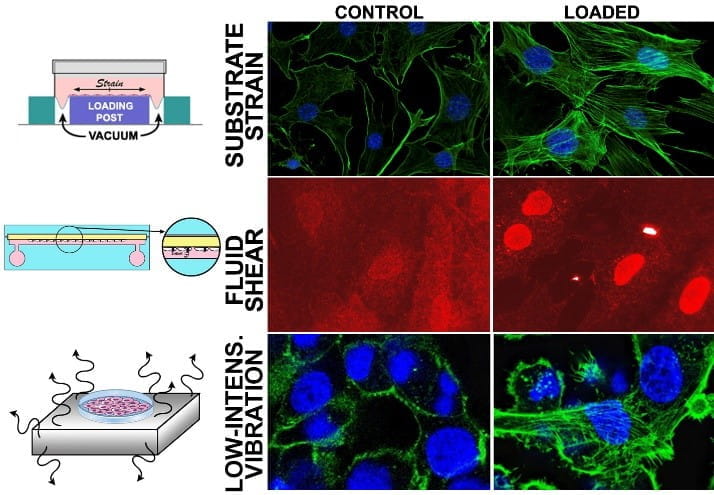Many musculoskeletal disorders are caused by disturbances in mechanical input, processing of mechanical information, or cellular/tissue effector responses to transduced mechanical stimuli. Those processes, if perturbed, can have as much of an impact on musculoskeletal health as deficiencies in more commonly thought-of factors such as altered hormonal or paracrine/autocrine factor signaling. However, the mechanically-related disorders, i.e. “mechanopathies,” are much more difficult to study experimentally.
The Musculoskeletal Mechanobiology Core specializes in techniques and technology designed to reveal the biology associated with the mechanical environment of musculoskeletal tissues. The core offers services in the following areas:
-
Training in the theory and practice of mechanical signaling in musculoskeletal tissue
-
In vivo bone and muscle anabolic mechanotransduction models:
-
ulnar loading in mice, rats, and rabbits
-
tibia loading in mice
-
Aurora muscle electrostimulation in mice and rats (Aurora)
-
Treadmill exercise in mice and rats
-
Whole body vibration in mice and rats
-
-
In vivo bone and muscle catabolic mechanotransduction models:
-
tail suspension in mice and rats
-
Botox-induced muscle paralysis in mice and rats
-
-
In vitro musculoskeletal cell mechanotransduction models:
-
parallel plate flow chamber for shear stress
-
substrate strain (FlexCell) model for biaxial stretch
-
low-intensity vibration (LIV) for cell cultures.
-

